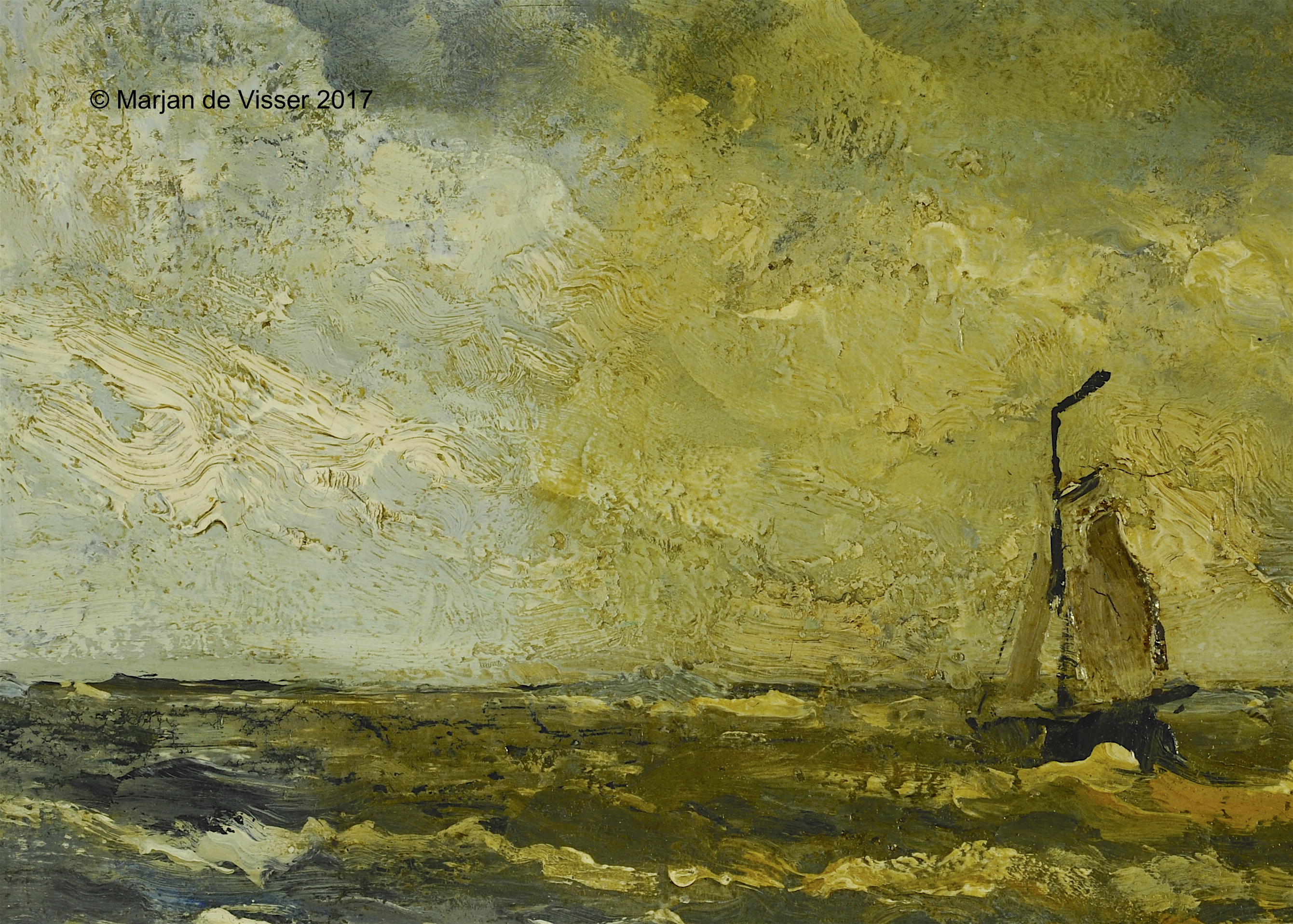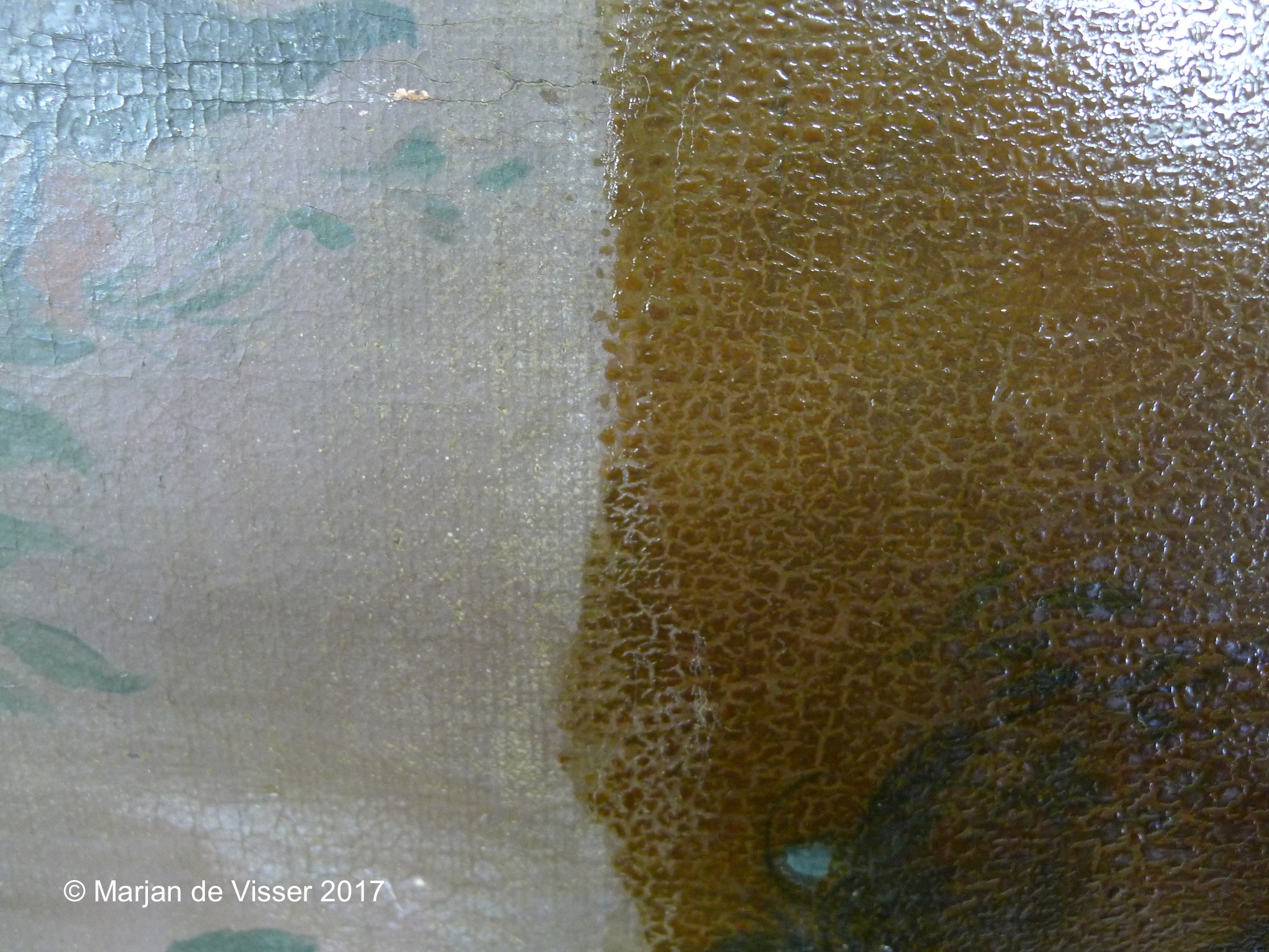Removing varnish from a painting

Removing varnish from a painting is a very delicate operation. Before the conservator Marjan de Visser decides to remove the varnish from a painting, she studies the varnish. This is done in daylight and under UV fluorescence . Because the color of the fluorescence of the varnish tells more about the type of varnish that has been used. Then the varnish is tested for solubility.
Varnish solvent tests

Because one drop of a particular solvent already provides a lot of information about the further research. Then perform small dissolution tests and study the results with each other. Measuring the acidity of the varnish also helps in researching a suitable cleaning agent. Of course, the choice for a suitable technique is also important. One of the methods used by the painting conservator in the restoration studio is The Modular Cleaning Program . If you want to know about this. Read about this in the restoration articles written by Marjan de Visser.
Examples of removal of yellowed varnish

removal of varnish with free solvent 
removal of varnish with free solvent 
varnish removal with Ethomenel gel 
varnish removal with Evolon tissue
Removal of an organic varnish

Varnishes made from natural resins are made to yellow with age
due to oxidation. This aging is clearly visible in a varnish on a painting from the 18th century. Here the conservator Marjan de Visser found a dark yellow varnish. However, the varnish had not only turned brown, but also creped, making it look like snakeskin. The varnish removal tests performed were surprising!
Removing a synthetic varnish
Synthetic varnishes require a different approach. Sometimes by dissolving them, creating sticky threads. On the other hand, some varnishes have poor adhesion to the paint surface and can be removed mechanically. Below you can see how this can be very effective. However, sometimes they are unfortunately not removable.
Remove synthetic varnish mechanically
dissolve synthetic varnish
Remove varnish with a Pemulen emulsion
One of the features of The Modular Cleaning Program is the use of gels and emulsions. There are water-based gels such as Xanthan, Pemulen, and Methyl Cellulose, but also emulsions. By putting an oil (for example benzyl alcohol) in a water gel-like Pemulen you get an emulsion. One of the characteristics of a ‘macro’ emulsion is that it is milky in color. Just like milk, it is also an emulsion of fat in water. Because with a Pemulen emulsion you can remove dirt and varnish very well without using any solvents. Often you only need 5% benzyl alcohol to take off the varnish. Certainly a lot safer for painting and restoration than 100%!
Remove varnish using a solvent gel
One of the features of The Modular Cleaning Program is the use of gels and emulsions. There are water-based gels such as Xanthan, Pemulen,









